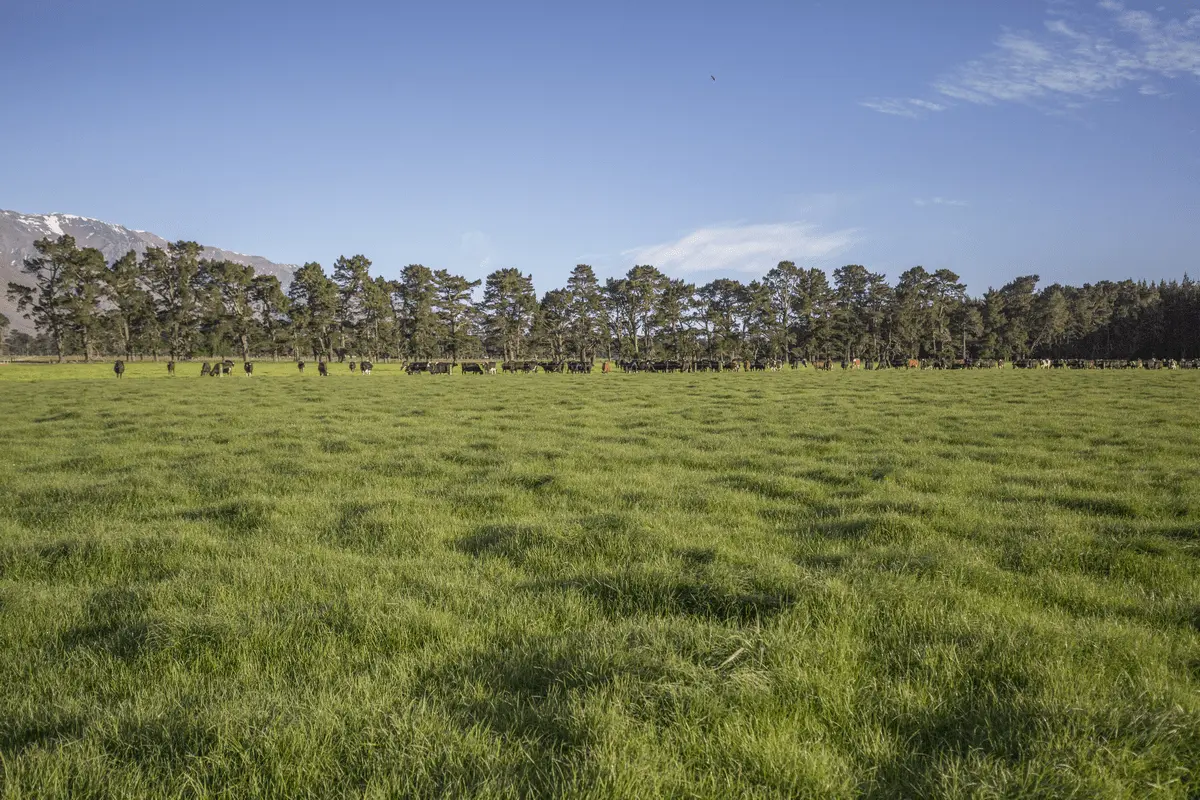To make the right decision for your farming system, it pays to know the differences when comparing diploid vs tetraploid perennial ryegrass, as well as the benefits of each.
What is diploid perennial ryegrass?
Diploid perennial ryegrass has two sets of chromosomes per cell, which impacts its functionality in grassland farming. Typically, it has a 2% higher dry matter content than tetraploid ryegrass. This is due to the smaller cells and lower cell-wall-to-cell contents ratio of diploid ryegrass.
Consequently, diploid grasses have greater tillering capacity, thus creating denser swards than tetraploids. When comparing pure diploid vs tetraploid ryegrass swards, livestock would need to consume more tetraploid swards to achieve the same dry matter intake of a diploid sward.
What is tetraploid perennial ryegrass?
Tetraploid grasses have four sets of chromosomes per cell. So, you will notice that tetraploid grass seed is bigger by comparison. In fact, generally twice the seed size of a diploid seed.
This enables it to compete better with older swards and to germinate quicker than diploid grass seed, making tetraploid perennial ryegrass an ideal option for rejuvenating open pasture swards.
Tetraploid ryegrass also has larger, more erect leaves that are easier for livestock to graze. However, the more pronounced open growth habit results in a higher risk of pugging damage. This makes it less suited to intensive farm systems with higher stocking rates or heavier soil types.
Generally, tetraploid grasses are considered to be of a higher quality. This, combined with their more open growth habit, makes them ideal for grazing. And it is widely accepted that livestock actually prefer to graze tetraploids rather than diploids.

Germinal’s Aber High Sugar Grasses (HSG)
Aber HSG varieties have been selectively bred by Germinal Horizon to contain a higher level of water-soluble carbohydrates, boosting livestock digestibility and performance.
Furthermore, superior diploid ryegrasses AberGreen and AberMagic have been bred for persistence. They establish quickly with strong, dense root growth and densely tillered plants that vigorously cover the ground. This makes them a robust option across all farm types.
AberGain for utilisation
Compared to standard tetraploids, AberGain is more densely tillered. This leads to higher utilisation, as well as improved grazing tolerance and palatability.
Simply put, animals prefer grazing on our tetraploid AberGain. This typically results in production increases along with many other benefits.
AberGain yields into late spring
As well as establishing quickly, AberGreen diploid grasses continue to yield into late spring compared with standard NZ diploid options.
The benefit of planting AberGreen for improved animal performance is that their increased spring growth is more closely matched to most farm requirements.
Boosting milk production with diploid and perennial ryegrass
The chart below shows the feed gap between a traditional pasture curve and the demands of spring milk production.

Source: Shadbolt, N. M., (2016) Factors influencing dairy trade from NZ. International Food and Agribusiness Management Association, 19(B).
As the data shows, the consistent late spring growth of cultivars like AberGreen is closely aligned with milk production requirements. These cultivars help to ensure that your cow milk production potential is realised across the season.
Meeting peaks in production goals
Along with improving pasture growth and digestibility, the extended late spring growth of Aber HSG is great for growing out your livestock to maximise the spring meat schedule.
One of the growth advantages of using AberGreen, AberMagic and AberGain is their improved late-spring growth. Sowing these cultivars helps provide the extra feed needed to achieve your liveweight gains on target. This gives you more flexibility around price decision-making at the farmgate.
Ask the pasture experts
To find out more, or to learn how Aber HSG can help improve your own pasture and production, contact us below.
